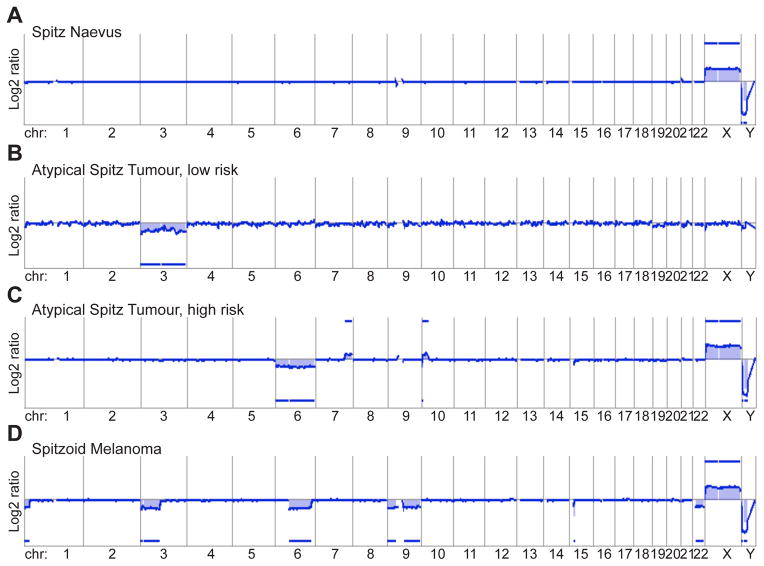Fig. 10.
Array comparative genomic hybridisation (aCGH) as an ancillary diagnostic tool in evaluating Spitz tumours. The aCGH profile of atypical Spitz tumours usually shows more genomic aberrations than of Spitz naevi, but not as many as spitzoid melanoma. (A) The aCGH profile of benign Spitz naevi shows usually a flat line indicating no chromosomal gains or losses (here the profile of the X- and Y-chromosome indicates that the tumour is from a female patient: 2 X-chromosomes, no Y-chromosome). (B) Atypical Spitz tumours at the benign end of the biological spectrum show mild histological atypia, and usually no more than gains or losses of one or two chromosomes or chromosome arms (here loss of the entire chromosome 3). (C) Atypical Spitz tumours at the malignant end of the biological spectrum show a considerable amount of histological atypia, including anisonucleosis and pleomorphism. In aCGH, gains and losses of several chromosome parts can be observed (here loss of the entire chromosome 6, a gain on the long arm of chromosome 7, a small loss and a larger gain on chromosome 10). (D) Spitzoid melanoma shows severe histological atypia, pleomorphism, and numerous, atypical mitoses; aCGH shows numerous chromosomal aberrations (here loss of parts of chromosome 1, 3, 6, 15, and loss of the entire chromosome 9 and 22).

